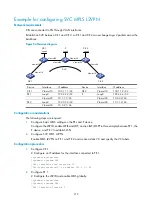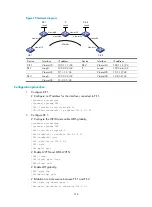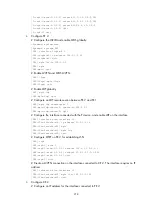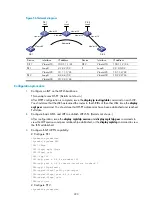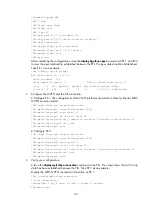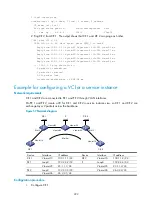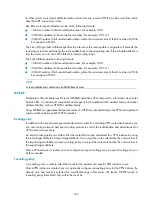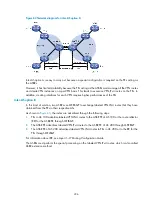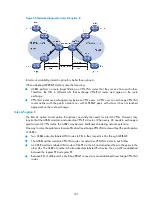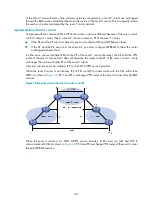
226
Transport Client Service VC Local Remote
VC ID Intf ID State VC Label VC Label
1000 GE1/0/1 1000 up 8192 8193
# Ping CE 2 from CE 1. The output shows that CE 1 and CE 2 can ping each other.
[CE1] ping 100.1.1.2
PING 100.1.1.2: 56 data bytes, press CTRL_C to break
Reply from 100.1.1.2: bytes=56 Sequence=1 ttl=255 time=90 ms
Reply from 100.1.1.2: bytes=56 Sequence=2 ttl=255 time=77 ms
Reply from 100.1.1.2: bytes=56 Sequence=3 ttl=255 time=34 ms
Reply from 100.1.1.2: bytes=56 Sequence=4 ttl=255 time=46 ms
Reply from 100.1.1.2: bytes=56 Sequence=5 ttl=255 time=94 ms
--- 100.1.1.2 ping statistics ---
5 packet(s) transmitted
5 packet(s) received
0.00% packet loss
round-trip min/avg/max = 34/68/94 ms
Troubleshooting MPLS L2VPN
This section describes troubleshooting techniques for MPLS L2VPN.
Symptom
After the L2VPN configuration, the peer PEs cannot ping each other. The
display mpls l2vc
command
output shows that the VC is down and the remote VC label is invalid (displayed as --).
Analysis
The reason the VC is down may be that the PEs are configured with different encapsulation types.
Solution
•
Verify that the local PE and the peer PE are configured with the same encapsulation type.
•
Verify that the PEs are configured with the remote peers, and the remote peer address is that of the
peer PE.

